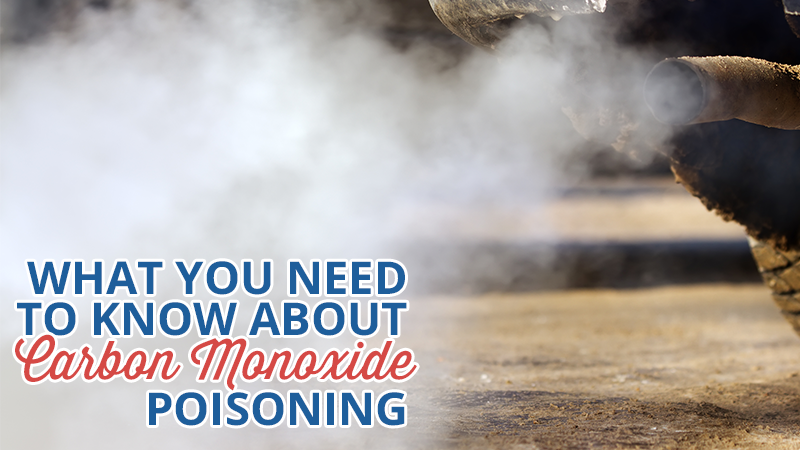Carbon monoxide (CO) poisoning is the number one cause of poisoning deaths in the U.S., claiming about 500 lives annually. Since the gas that causes it is colorless, odorless and tasteless, it’s a sneaky killer.
Burning wood, gas, oil, charcoal or kerosene as fuel always produces some carbon monoxide. However, carbon monoxide is dangerous only in high concentrations. Common symptoms of carbon monoxide poisoning are headache, dizziness, vomiting, nausea, chest pain and impaired thinking.
Learn how to keep you and your family safe from CO poisoning.
What Makes Carbon Monoxide Deadly
Carbon monoxide kills only when (1) faulty equipment causes incomplete fuel combustion, resulting in a build-up of carbon monoxide to unsafe levels and (2) the gas has nowhere to escape. Carbon monoxide poisoning occurs more often in homes than in commercial buildings because the latter have better air circulation than homes. People die of carbon monoxide poisoning because the gas displaces the oxygen in their cells. They become sleepy and never wake up.
A number of appliances and situations around the home are potential sources of carbon monoxide poisoning: HVAC units, including furnaces and heat exchangers; gas stoves and ranges; wood-burning stoves; idling vehicles in closed garages; portable space heaters, stoves, grills and other unvented appliances; a gas stove used for heat rather than cooking; paint remover containing methylene chloride, which changes into carbon monoxide in the body; fireplaces; and small engines.
How to Prevent Carbon Monoxide Poisoning
Preparation, awareness and observation prevent CO poisoning. First, get a carbon monoxide detector. Make sure you get one that meets standards set by Underwriters Laboratory (UL) or International Approval Service (IAS). These approved alarms have an audible warning signal.
Have an HVAC contractor inspect your heating system at least once per year. Have specialists check your appliances, vents and chimneys for cracks and blockages. In between inspections by professionals, make sure you examine your equipment regularly, checking for rust, stains and corrosion. Soot on appliances and vents sometimes can cause a combustion problem.
Backdrafting As a Cause of CO Poisoning
Backdrafting, too, is a source of carbon monoxide poisoning. This occurs when the gases from burning fuels in boilers, heaters in walls, furnaces and water heaters come back into the interior rather than exiting to the outdoors by means of the flue. Also contributing to it is abnormally low indoor air pressure. This potentially dangerous situation is another reason your safety depends on a heating system inspection by an HVAC contractor. Always choose a company with qualified heating and air repair technicians.
Other precautions against carbon monoxide poisoning that depend on your actions are waiting until a fire is totally out before closing the damper or fireplace; making sure to open the flue when using a fireplace; and saving your grilling for outdoors.


Recent Comments